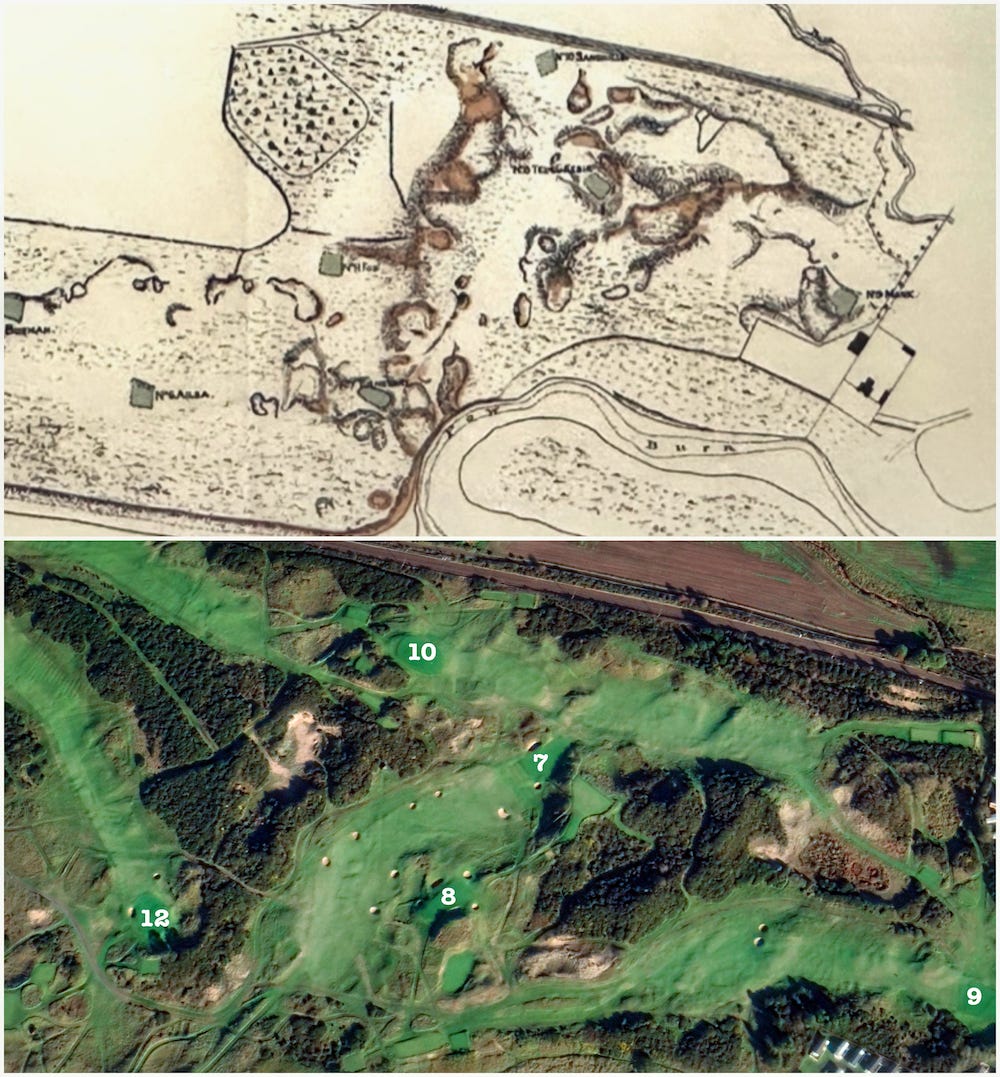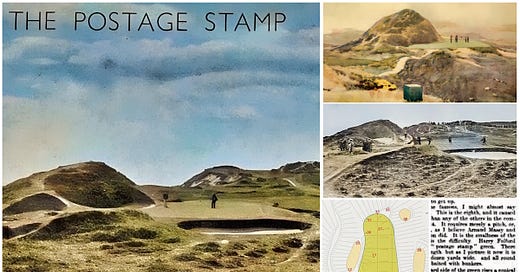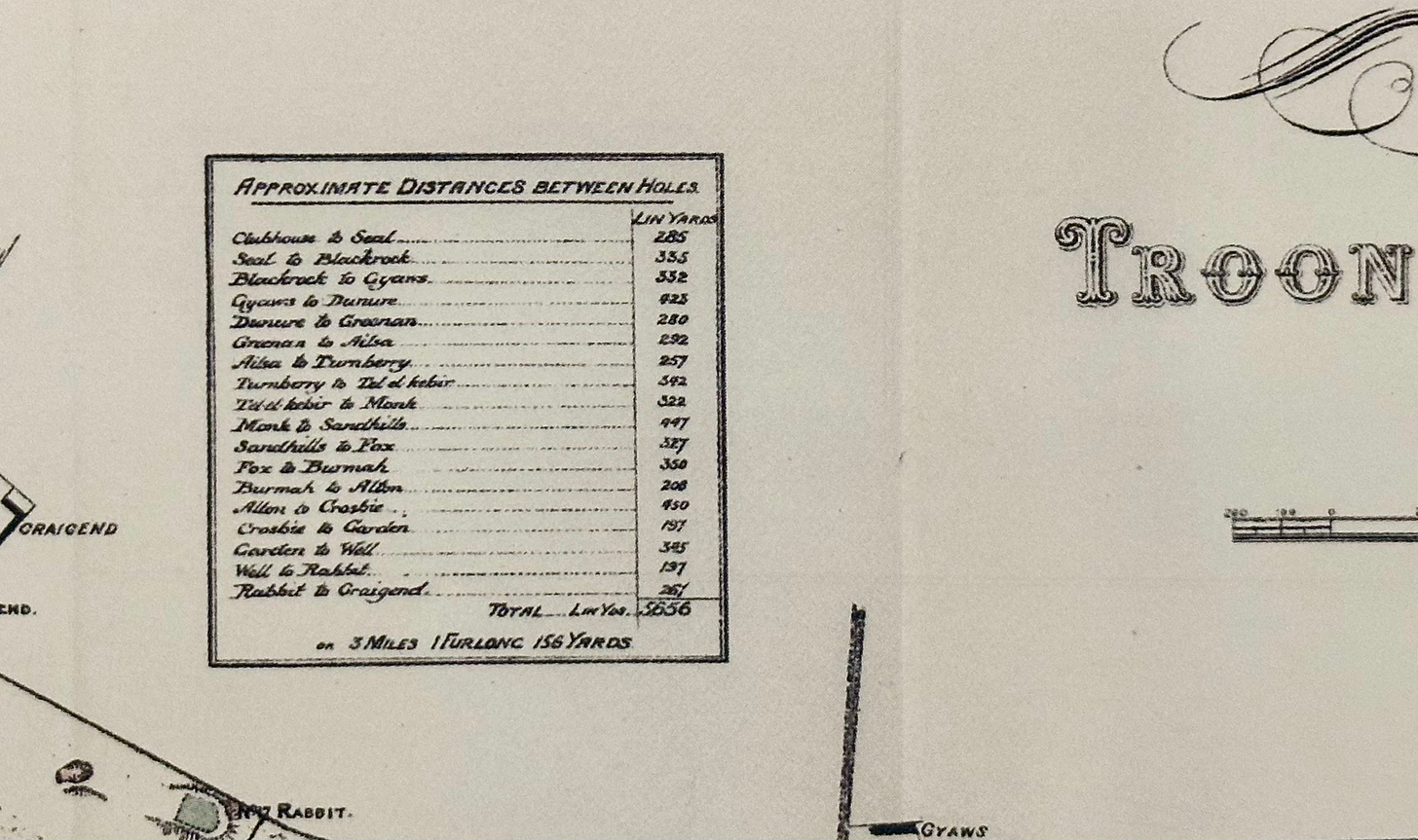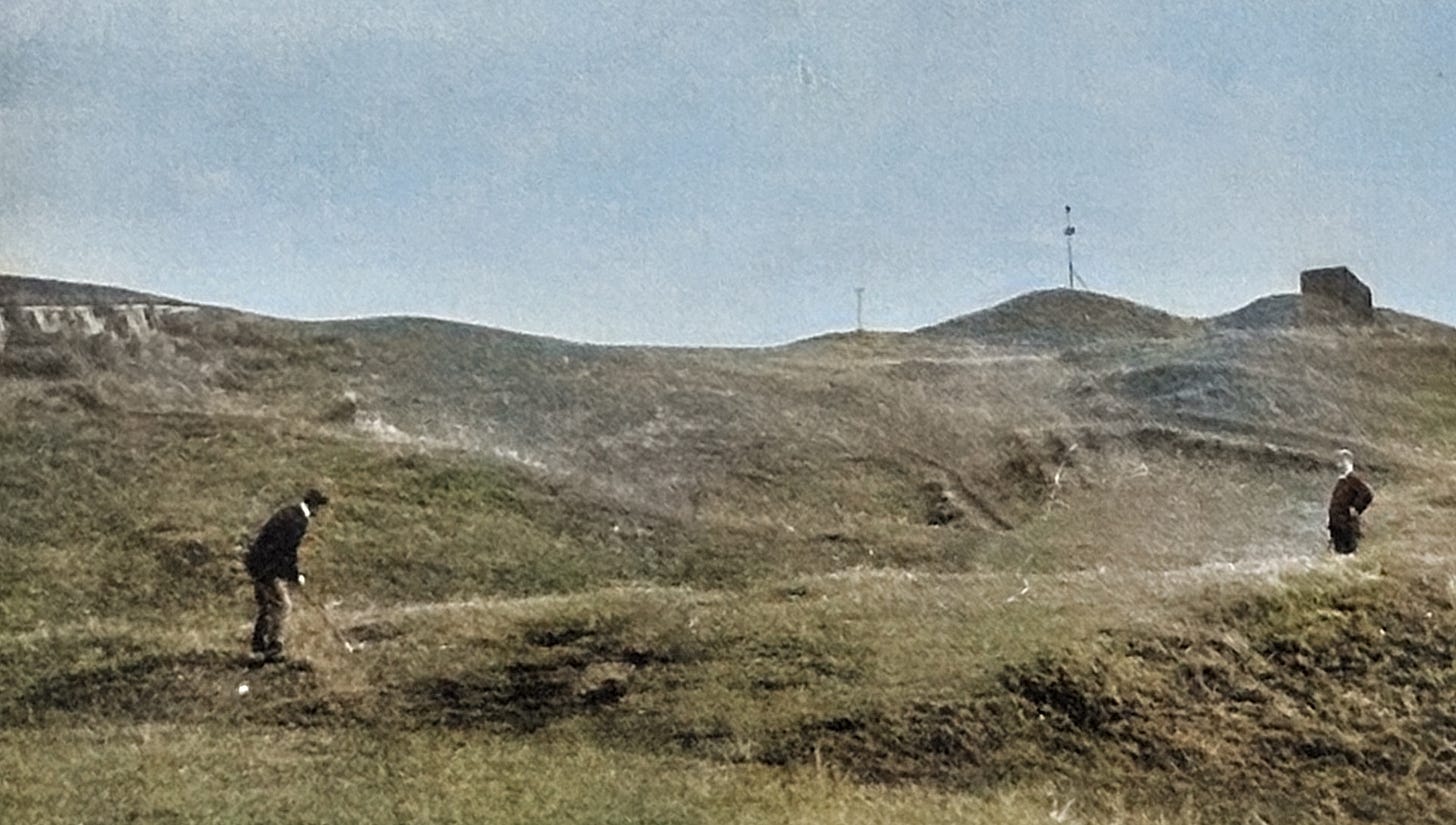Postage Stamp Through The Years
The famous par 3 was created by Willie Fernie and updated by James Braid into one of golf's most revered holes. A detailed look at how Troon's 8th has evolved ahead of the 2024 Open.
123 yards: Official Open yardage.
5: Bunkers.
33 paces: Green depth.
1907-1909. Established in these years by architect and club professional in Willie Fernie overhauling the course.
1922-23: James Braid adds 67 bunkers to Troon including two on the Stamp.
15 feet: Drop from tee to green.
5th: Shortest hole in major history. (Shortest: 15th Los Angeles Country Club 2023, 81 yards).
3.09: Scoring average in the 2016 Open. (87 birdies, 290 ars, 66 bogeys, 11 doubles and 1 other)
3.09: Scoring average in the 2004 Open. (82 birdies, 273 pars, 83 bogeys, 19 double bogeys+)
4: Score of Greg Norman in his 1989 Open final round 64, the only bogey of the day.
3: Hole-in-one’s during The Open (Gene Sarazen, Dennis Edlund and Ernie Els)
1994: The Postage Stamp gets a Royal Mail postage stamp designed by Paul Hogarth and valued at 35 p as part of a collection that included versions of St.Andrews, Muirfield, Carnoustie and Turnberry.
Way, way too much attention will be paid to the Postage Stamp next week when The 152nd Open Championship arrives at Royal Troon.
But next week is not this week!
I thought it’d be fun to trace the wee three’s evolution into one of the world’s wildest, weirdest and shortest championship holes on a proven links. Troon’s 8th hole stands out for so many reasons, including a strange lack of super-shorties on the Open rota (but the short-yardage gems are coming back in all of golf, as I wrote in the new Links).
Besides its tiny size and distance, the 8th at Royal Troon reminds us that most all-time great holes were not dialed in from day one and that changes carried out with the intent of spicing things up, in the right hands, can make things better.
Troon’s evolution into the course we know today involved a series of updates fairly typical of early links reacting to popularity shifts, the desire to reach 18 holes, and changes in the ball.
“Originally the course contained only nine holes, afterwards it was extended to twelve holes, and subsequently to the full round of eighteen,” Horace Hutchinson wrote of Troon in 1897’s epic, British Golf Links. “Surveying the links in their primitive state, even the most enthusiastic golfer would have been appalled at the prospect of playing over them; but with perseverance all obstacles have been overcome, the result being that a most enjoyable game can now be had upon them.”
Early Troon appeared primitive, raw and appeared to be an extreme cross-country affair. Yardages were presented from named hole to name hole, not by a number. The shortest measured 197 yards. Par was not printed but the distance to play the entire 19th century 18-holes was listed as 3 miles, 1 furlong, 156 yards.
The most photographed and discussed early hole seemed to be the seventh. Early Troon golfers played on some of the same ground as today’s hole, with one key difference. The early iteration of Tel el Kebir measured 322 yards and featured a blind uphill second shot to a green perched beyond today’s version. The hole had been named for 1882’s decisive Anglo-Egyptian war battle at Tel-El-Kebir.
Tel-El-Kebir’s fairway played through the center of this image with the ninth tee perched on today’s Postage Stamp tee location:

A short par 3 eighth did not exist until Willie Fernie remodeled Troon sometime in 1907-09. Although later accounts describe a one-shot hole playing left of today’s eighth green and in a hollow still used as a winter-time green at Troon, there is no concrete evidence it ever existed. But it’s also possible Fernie created such a hole and then moved the green over to today’s spot.







